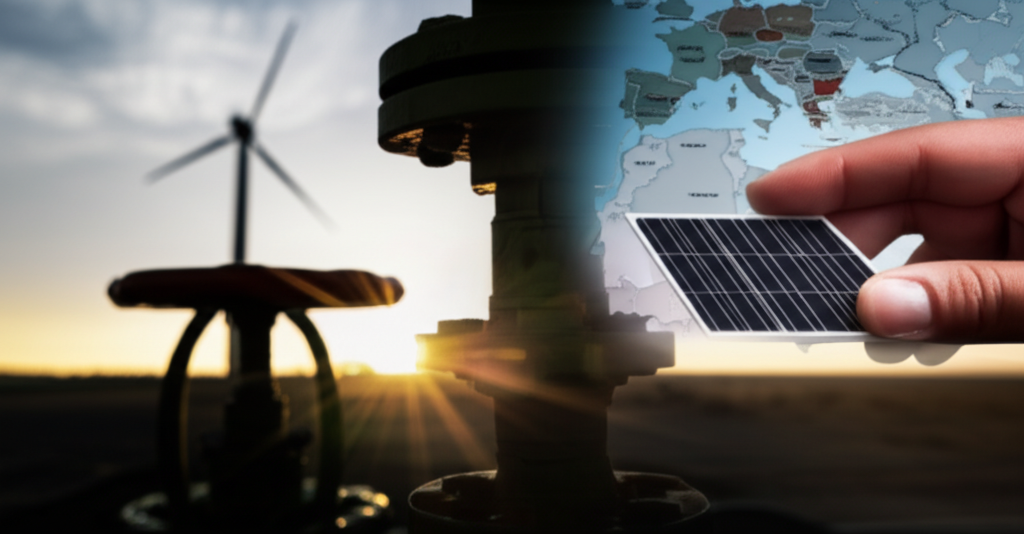Energy Markets Enter a Critical Inflection Point
The global energy landscape, a bedrock of economic stability and geopolitical influence, is currently navigating a period of profound transformation. Far from incremental adjustments, experts and market participants alike agree that energy markets are now entering a critical inflection point – a moment where existing trends dramatically accelerate or fundamentally shift course, leading to an entirely new paradigm. For young adults keenly observing economic shifts and investment opportunities, understanding this pivotal moment is not just academic; it’s essential for grasping the future trajectory of industries, national policies, and personal finances.
This inflection point is not born from a single catalyst but rather a confluence of powerful forces. Geopolitical tensions remain a primary driver of volatility. The ongoing conflict in Ukraine, for instance, fundamentally reshaped European energy security, compelling nations to rapidly diversify away from Russian natural gas. Similarly, instability in the Middle East continues to cast a long shadow over global oil supplies, underscoring the fragility of long-established energy routes. These events highlight how geopolitical considerations are no longer just external factors, but deeply embedded components of energy market dynamics, influencing pricing, supply chain resilience, and investment decisions. Nations are increasingly prioritizing energy independence and diversification, leading to strategic shifts in sourcing and infrastructure development that ripple across global trade.
Simultaneously, the inexorable march of the energy transition continues to gather pace, driven by intensifying climate concerns and ambitious decarbonization targets. Governments worldwide are implementing policies to accelerate the adoption of renewable energy sources such as solar, wind, and hydropower, while also exploring next-generation technologies like green hydrogen and advanced nuclear fission. This transition involves not just building new capacity but also decommissioning fossil fuel infrastructure and overhauling existing electricity grids to accommodate intermittent renewable generation. The economic implications are vast: a surge in demand for critical minerals like lithium, cobalt, and nickel, which are vital for batteries and electric vehicles, is creating new supply chain challenges and geopolitical competition. Investment capital is flowing robustly into green technologies and infrastructure, signaling a long-term shift away from traditional hydrocarbons, although the latter remain indispensable for current global energy needs. This dual challenge of meeting immediate energy demand while aggressively pursuing long-term climate goals creates inherent tensions and complex investment dilemmas.
Technological advancements are also playing a transformative role. Breakthroughs in battery storage are making renewable energy more dispatchable and reliable. Improvements in grid management systems are enhancing efficiency and integrating diverse energy sources. Furthermore, the burgeoning electric vehicle (EV) market is fundamentally altering demand patterns for refined petroleum products, while simultaneously increasing electricity consumption. These innovations are not just improving efficiency; they are fundamentally disrupting traditional energy business models and creating entirely new market segments. Companies that can adapt quickly and innovate within this rapidly evolving technological landscape are poised to thrive, while those clinging to outdated paradigms face significant headwinds.
Economically, the impact of these shifts is profound. Energy prices directly influence inflation, interest rates, and overall economic growth. Volatility in oil and gas markets, driven by geopolitical events or supply-demand imbalances, can quickly translate into higher costs for businesses and consumers, affecting everything from manufacturing expenses to transport fares. This direct link means central banks and policymakers must factor energy market stability into their macroeconomic strategies. For young investors, understanding these interconnected forces is crucial. The investment landscape is shifting from traditional oil and gas giants to companies specializing in renewable energy, energy storage, critical mineral extraction, and smart grid technologies. Identifying these emergent opportunities, while also understanding the risks associated with stranded assets in the fossil fuel sector, is key to navigating the coming decades.
The critical inflection point in energy markets therefore represents a complex interplay of geopolitics, climate imperatives, technological innovation, and macroeconomic forces. It is a period defined by heightened volatility but also immense opportunity. As the world navigates this transition, the strategic decisions made today by governments, corporations, and individuals will shape the energy future for generations, determining everything from national security to the cost of living and the very health of our planet. Adaptability, foresight, and a nuanced understanding of these interlocking dynamics will be paramount for success in this new energy era.





